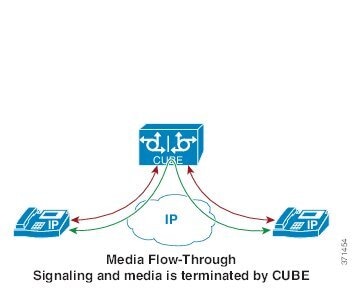Feature Information for Media Path
The following table provides release information about the feature or features described in this module. This table lists only the software release that introduced support for a given feature in a given software release train. Unless noted otherwise, subsequent releases of that software release train also support that feature.
Use Cisco Feature Navigator to find information about platform support and Cisco software image support. To access Cisco Feature Navigator, go to https://cfnng.cisco.com/. An account on Cisco.com is not required.|
Feature Name |
Releases |
Feature Information |
|---|---|---|
|
Configuring Media Path |
12.4(3), 12.4(24)T, 15.0(1)M |
The Media Path feature allows you to configure the path taken by media after a call is established. The following commands were introduced by this feature: media-flow around, media flow-through, media anti-trombone . |





 Feedback
Feedback